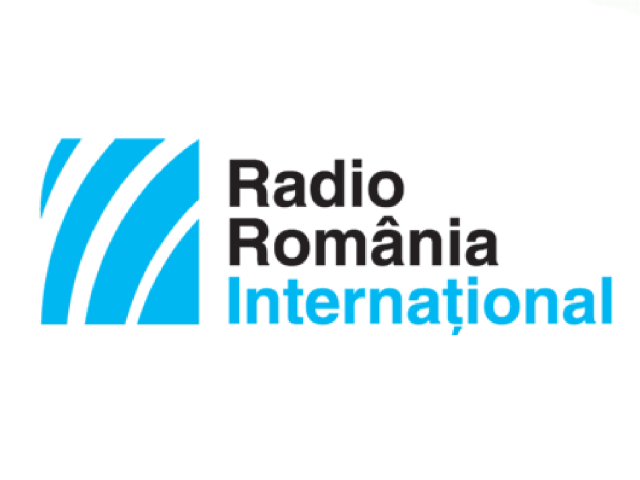The year 1946 and political collaborationism
A lot has been written about political collaborationism in relation to the communist regime and about the political collaborationism of intellectuals in particular
Warning: Trying to access array offset on null in /home/web/rri.ro/public/wp-content/themes/rri/template-parts/content.php on line 53

Warning: Trying to access array offset on null in /home/web/rri.ro/public/wp-content/themes/rri/template-parts/content.php on line 98
Steliu Lambru,
13.07.2019, 11:06
In Romania, the word is also used with respect
to the association of specific factions of democratic parties with communist
parties, for electoral purposes, in the second half of the 1940s. This was in
fact one of the communists’ chief strategies in the elections: they attracted
dissidents from traditional parties in order to mislead voters and to persuade
them to vote for candidates that were close to the communists. Ahead of the
November 1946 elections in Romania, groups had splintered from all the
traditional parties, such as the National Peasant Party, the National Liberal
Party and the Social Democratic Party. These groups disagreed with their
respective party leaders, and instead were very approving of the coalition
headed by the communists. The Anton Alexandrescu National Peasant Party group
had splintered from the National Peasant Party, the Gheorghe Tatarescu National
Liberal Party had splintered from the National Liberal Party, whereas the
Social Democratic Party was taken over completely and its president, Constantin
Titel-Petrescu, had to start from scratch. He set up the Independent Social
Democratic Party, which was the true heir of the Romanian Social Democratic
legacy.
Dan Amedeo Lazarescu, a legal professional who
served time in communist prisons in the 1950s, was a member of the Liberal
Youth in the mid-1940s and a witness to all that political scheming.
Interviewed by Radio Romania’s Centre for Oral History in 1996, Lazarescu
remembers that in the meeting where the National Liberal Party’s election
strategy was being discussed, the leader of the Tatarescu Liberal dissident
group, Petre Bejan, was urging all Liberals to join the communists in the
election.
Dan Amedeo Lazarescu: We’d
been told that election-wise, the Communist Party was nothing. The whole
country would vote for Maniu. Our party was next to nothing, in terms of
voters. So if we went separate way, we would be crushed and only if we stood
together would be able to succeed. Then my good friend, the brilliant lawyer
Patriciu Popescu, who was a great speaker, said: ‘Mister president, the type of
action you have pleaded for does not make much sense. You said that
election-wise, the Communist Party is zero. Election-wise, our party is
nothing. But does that mean that if the two parties merge, they can win
parliamentary majority? What would the outcome of that be, if nothing adds up
to nothing? There is something wrong here!’ A round of applause erupted and the
secret voting was again called for. Petre Bejan, insisted for an open voting
and more than two thirds voted for running on common voting lists.
The liberals who opposed participation in election alongside
communists, also called opinionists,
returned to the National Liberal Party lead by Dinu Bratianu, the true exponent
of Romanian liberalism.
Dan Amedeo Lazarescu: The opinionists,
opted for following Dinu Bratianu. Since all of them were my friends,
especially Dumitru Alimanesteanu, Bentoiu and especially Costel Tataranu and
Aznavorian, I mediated their transition and very quickly they returned, but
with great resistance on the part of some of Dinu Bratianu’s men. The head of
the Neamt Liberal organization, Alexandru Guranda, was strongly against the
return of the opinionists to the
Liberal Patry, yet in the long run Dinu Bratianu was wise enough receive them
back. Consequently, Tatarascu and his men decided to run on common voting
lists, while the opinionists followed
Dinu Bratianu.
The Social Democrats had an even tougher fate
since their party was simply confiscated through an internal coup.
Dan Amedeo Lazarescu: With Titel Petrescu
things were a little bit more dramatic. It is here that the government
intervened. Around March 17 or 18, 1946, Titel Petrescu decided to run on
separate lists and he had delivered a famous speech at the Athenaeum, a speech
that I heard, where he eulogized the United States, who won the war with the
obvious support of the Soviet Union. The enthusiasm was tremendous; the
auditorium was packed with people, while in the Palace Square, in front of the
Athenaeum, the Social-Democrat youth was chanting slogans in favor of Titel
Petrescu. Titel Petrescu however, was very decided not to run on common lists
with the communists, so he asked for a party congress, being confident he would
have the majority. He had appointed his friend, Voitec, as public instructions
minister, although Maniu ceded him that ministry on condition that he would
personally run it. He relied less on Lucretiu Patrascanu and lesser on Tudor
Ionescu, a Radical Party member. Iunian’s Radical Party was made up of 6
members and each of the 6 members opted for another political group: Ion
Gheorghe Maurer joined the communists, Misu Paleologu, who was the party’s
secretary general, remained with the Peasant Party, while Tudor Ionescu, my
former Physics professor at the Spiru Haret high-school, a university professor
and a mines and oil Minister in the Petru Groza government, joined the Social-Democrats.
The outcome of the November 19, 1946 election
proved the then Romanian electorate could not be fooled. The National Peasant
Party and the National Liberal Party got 78% of the votes together, while the
Communist-led coalition, jointly with the collaborationists, were unable to get
more than 22% of the votes, despite massive vote rigging. However, in the end,
the result was reversed and from then on, until 1989, political elections were
a succession of masquerades.






























